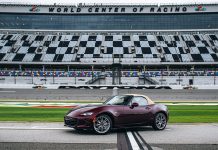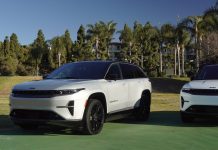Tesla keeps releasing new versions of the FSD Beta v11, the last variant that will be based on hardcoding scenarios and some artificial intelligence processing. FSD V12, the out-of-beta version of the software that’s supposed to turn Tesla EVs into robotaxis, will work solely with neural networks. But there’s still a long way to go before the average customer will experience it. Now, it’s all about finishing v11.
FSD Beta v11.4.7.2 was part of the 2023.27.6 general software update. It improved a couple of very specific things for the ADAS. Now, it should be able to avoid going off-route when there’s a lane change that must be done rapidly and recognize large and exotic vehicles more easily and accurately. It also enhanced the way the car changed direction and fine-tuned the automatic emergency braking system.
The system should also be more able to avoid making contact with a pedestrian or cyclist by anticipating their movements. Tesla labels the latter traffic participants as “vulnerable road users (VRUs).”
Simply put, Tesla updated its Level 2 advanced driver-assistance system (ADAS), making it even more capable. But is that completely true? Was this recent update an improvement in all aspects?
Luckily for us, some FSD Beta customers decided to share their findings with the world. Some have even made a living out of it or treat this free marketing for Tesla as a side hustle.
No matter their motivation, it’s great that we get to see past the corporate lingo. FSD Beta and FSD have a ton of potential, even though the software still has to prove its worth. Other brands like Mercedes-Benz or real robotaxi operators like Waymo or Cruise are already ahead.
Chuck Cook is one of those people who help prospective FSD Beta buyers learn what the system can and cannot do. His latest video shows that the electric vehicle isn’t able to do a U-turn. However, that was a challenging maneuver because one lane was blocked by workers trimming the trees.

But right after disengaging and engaging FSD Beta again, Cook shows how the Tesla could have gotten him into a crash. The ADAS tried to merge at the wrong time. Fortunately, the driver was attentive and understood he must always remain in control, unlike other influencers.
“That was not the chance to go. Of all the times it could’ve gone, that was not the chance to go!” noted the Tesla owner.
He also had to manually override the vehicle’s speed limit because it constantly tried to go slower than the traffic flow. At one point, FSD Beta wanted to go onto another highway section but could not accelerate and find an optimal entry point. The driver had to intervene.
Still, Cook says potential FSD Beta buyers should know that using it on city streets is still relaxing. He recommends drivers try the system out in their area, find what it can’t handle, and pay more attention in those moments to avoid any unwanted complications.
Finally, the Tesla owner also points out that any true FSD Beta enthusiast will be waiting for FSD V12 to deliver amazing progress. Such incremental refinements are great, but they will never feel revolutionary.
He is right, but we would like to remind you that even the neural net-only FSD V12 tried to run a red light. The system still needs some more polishing before being released to everyone willing to pay $12,000.




